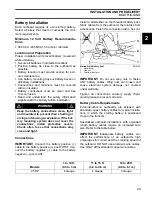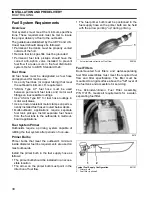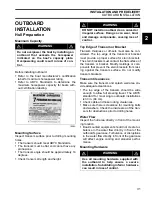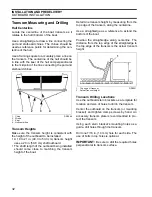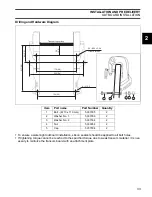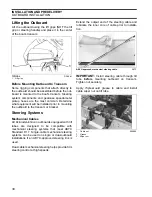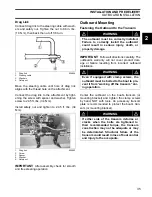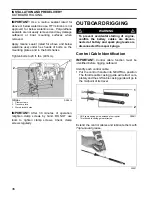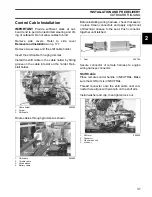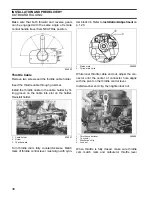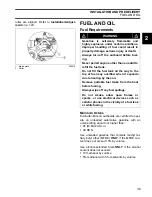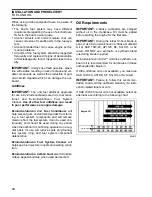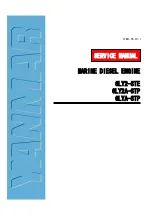
41
INSTALLATION AND PREDELIVERY
RUNNING CHECKS
2
RUNNING CHECKS
Break-In (10 Hours)
Follow this procedure to protect the outboard dur-
ing its initial hours of operation. Careful break-in
allows internal engine components to seat prop-
erly, resulting in maximum engine life and perfor-
mance.
Failure to carefully follow the break-in procedures
can result in engine damage.
Perform the 10-Hour break-in procedure with the
boat and engine in the water, using an appropriate
propeller.
IMPORTANT:
DO NOT perform break-in using a
flushing device. DO NOT start-up or run the
engine out of water. DO NOT leave a running
engine unattended.
During the break-in, check water pump operation
often. Look for a steady stream of water from the
water pump indicator. If the stream of water stops,
shut off the engine to prevent damage. Find and
correct the cause before continuing.
Change the RPM often. Avoid holding a throttle
setting longer than 15 minutes.
Check the crankcase oil level often. Add oil if
needed.
First 10 minutes of operation
— Operate engine
in gear at idle only.
Balance of First 2 hours of operation
— Oper-
ate in gear below 3500 RPM or 1/2 throttle only.
With easy planing boats, use full throttle to quickly
accelerate boat onto plane. Immediately reduce
throttle to one-half as soon as the boat is on
plane. BE SURE boat remains on plane at this
throttle setting.
Third hour of operation
— Run the engine in
gear at various speeds up to 4000 RPM or 3/4
throttle only.
Balance of first 10 hours of operation
— Run
the engine in gear at various engine speeds
including full throttle, but remain at full throttle no
longer than 5 minutes.
Change the engine speed every 15 minutes.
DO NOT
exceed recommended maximum engine
RPM. Refer to
WARNING
DO NOT run outboard without a water sup-
ply to the outboard’s cooling system. Cool-
ing system and/or powerhead damage
could occur.
DANGER
DO NOT run the engine indoors or without
adequate ventilation or permit exhaust
fumes to accumulate in confined areas.
Engine exhaust contains carbon monoxide
which, if inhaled, can cause serious brain
damage or death.
DANGER
Contact with a rotating propeller is likely to
result in serious injury or death. Assure
the engine and prop area is clear of people
and objects before starting engine or oper-
ating boat. Do not allow anyone near a pro-
peller, even when the engine is off. Blades
can be sharp and the propeller can con-
tinue to turn even after the engine is off.



